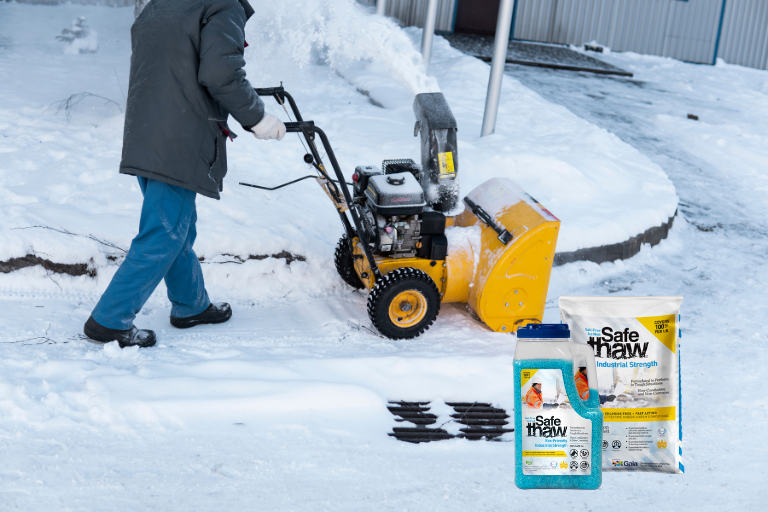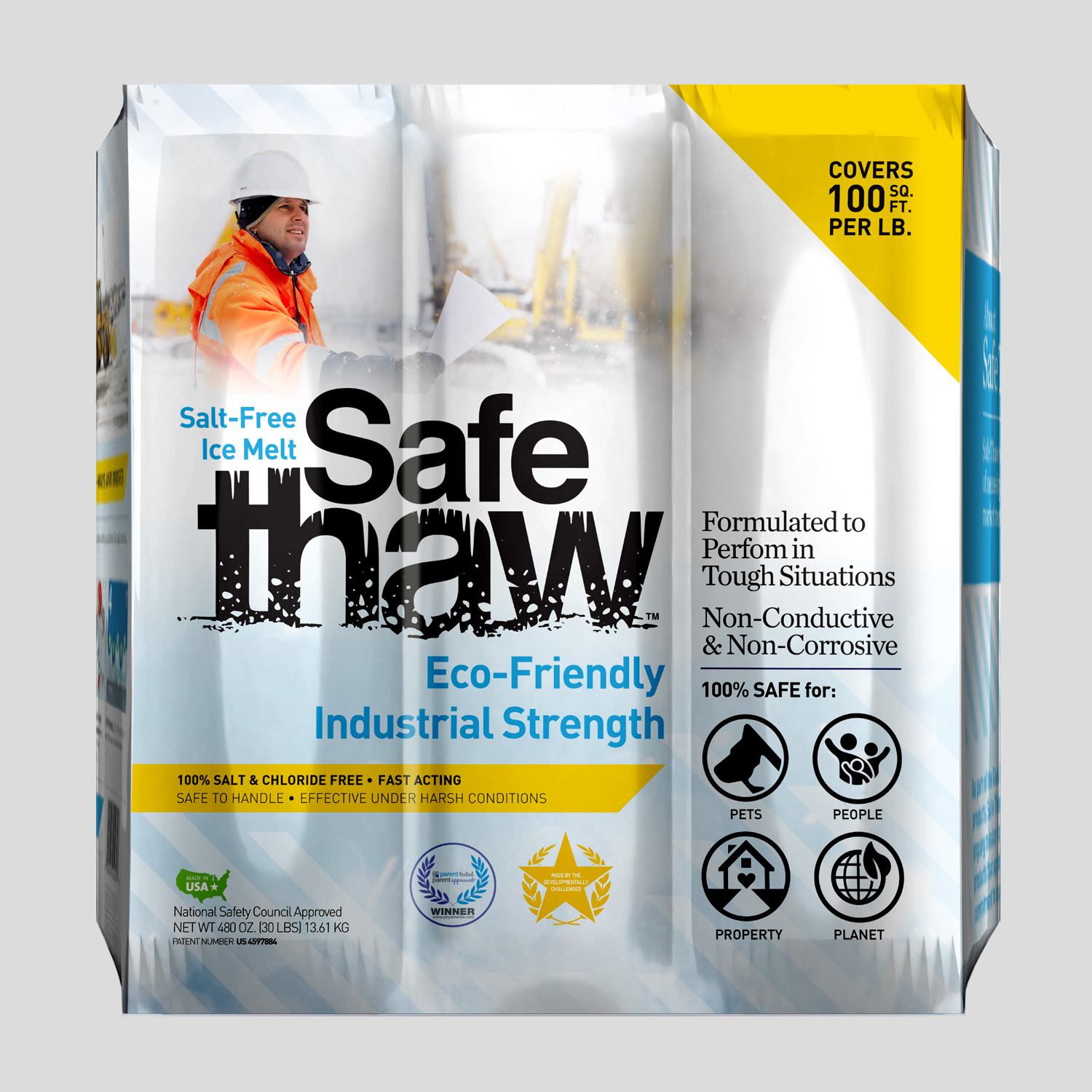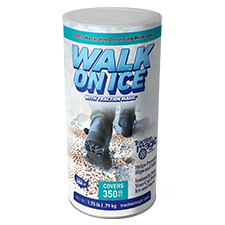Can You Pour Concrete In Cold Weather?

When you think of concrete projects, the image that comes to mind is often that of sunlit days and warm weather. However, sometimes projects don’t wait for perfect conditions. This brings up a commonly debated question in the construction industry: is it possible to pour concrete in cold weather? Let’s dive deep into this chilly topic and set the record straight.

Safe Thaw
Safe Thaw was created as the ice management solution for tough winter environments. Ideal in commercial and industrial properties, shops, government agencies, bridges, and construction.
The Science Behind Concrete Curing
To grasp why temperature is so crucial to concrete when you pour concrete in cold weather, we need to understand the curing process. When water is added to cement, a chemical reaction called hydration occurs, turning the mixture into the solid slab we recognize as concrete. This reaction generates heat and needs the right temperature to ensure optimal strength and durability. Cold conditions can hamper this process, but does that mean it’s a complete no-go?
Why Temperature Matters
When the temperature drops, several things happen that can affect freshly poured concrete:
- Delayed Setting: Cold slows down the curing process. While this might seem like a minor inconvenience, it makes the concrete vulnerable to damage for a longer period.
- Risk Of Freezing: If the temperature drops too low, the water in the concrete can freeze. When water freezes, it expands, leading to potential cracks and structural issues.
Decoding The Ideal Temperature To Pour Concrete
The magic number most professionals agree on is 50°F (10°C). If the forecast predicts temperatures below this within 24 hours of the pour, extra measures should be considered. Why this specific temperature, you ask? Below 50°F, the hydration process slows down considerably.
Facing The Cold: How To Get It Right
Cold weather doesn’t mean you have to hang up your tools and wait for spring. Here’s how to ensure a successful cold-weather concrete project:
- Hot Water To The Rescue: Using warm water to mix the concrete can raise its initial temperature, offering a warmer start to the curing process.
- Protective Coverings: Insulated blankets can help retain the concrete’s heat, ensuring it doesn’t freeze before it sets.
- Specialized Mixes: Some concrete mixes are specially formulated for cold weather. These usually contain accelerants that speed up the setting time.
Say No To Salts And Chemicals
While it might be tempting to throw in some salt or other chemicals, thinking they might prevent the concrete from freezing, this is a big no-no. Here’s why:
- Degrading The Surface: Salts can cause surface spalling, which means the top layer of the concrete starts chipping away.
- Corrosion Concerns: Any metal reinforcements in the concrete are at risk of corroding when exposed to salts.
- Uneven Shades: Certain chemicals can lead to discoloration, leaving you with a blotchy driveway or patio.
- Environmental Impact: Chemical runoff isn’t just harmful to your concrete. It can also harm surrounding vegetation and enter waterways, impacting aquatic life.
Why Safe Thaw Is The Concrete’s Best Friend In Winter
Now, while salts and most chemicals are out of the question, there’s an exception: Safe Thaw. If you’re looking to protect your concrete from the icy grip of winter, Safe Thaw should be your go-to solution.
- Preserving Integrity: Safe Thaw is non-corrosive. This means that, unlike other solutions, it won’t wreak havoc on your industrial assets, machinery, or pose risks like short circuits.
- Environmentally Conscious: With its eco-friendly formula, Safe Thaw ensures maximum performance without compromising Mother Nature.
- A Step Ahead: What sets Safe Thaw apart is its patented composition. This dual-effect compound, with its crystalline amide core and a unique glycol admixture, not only melts ice but also provides traction.
100% salt & chloride-free, fast acting Ice Management Solution
In Conclusion
The question of whether to pour concrete in cold weather or not isn’t the taboo it was once thought to be. With the right knowledge, tools, and materials, you can successfully lay concrete even when the mercury dips. Remember, the goal is to ensure the concrete sets properly, and using products like Safe Thaw provides peace of mind without the detrimental side effects of conventional methods. So next time winter approaches, and you have a concrete project lined up, don’t fret – you’ve got this!
Try Also Our Other Winter Safety Products:
Safe Paw
The Original and #1 Selling Pet and Child Safe Ice Melt for over 20 years. Guaranteed environmentally safe –It won’t harm animals or children, and it won’t damage your property. That’s Safe Paw. Safe Paw can change how winter affects our planet.

Walk On Ice
The handy disposable canister can be taken everywhere, with the same 100% naturally occurring minerals that provide instant traction on ice or snow. Use it on sidewalks, steps, or as an instant traction agent for your car.



